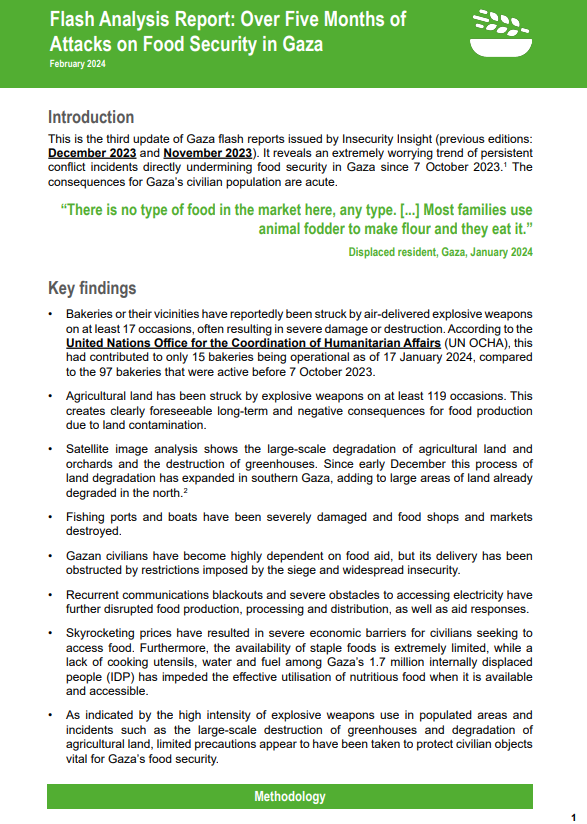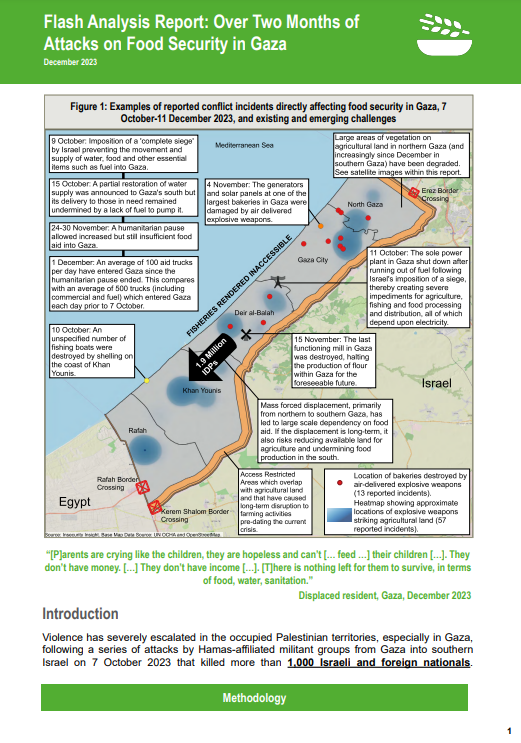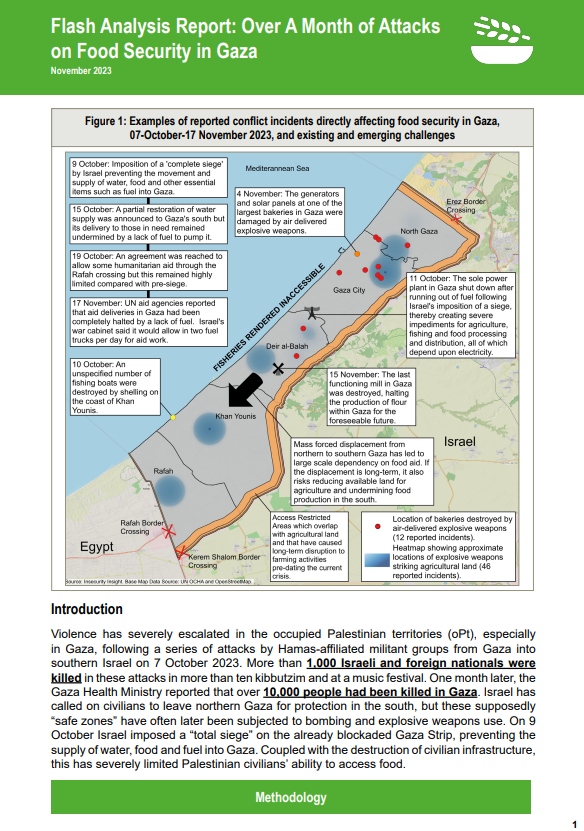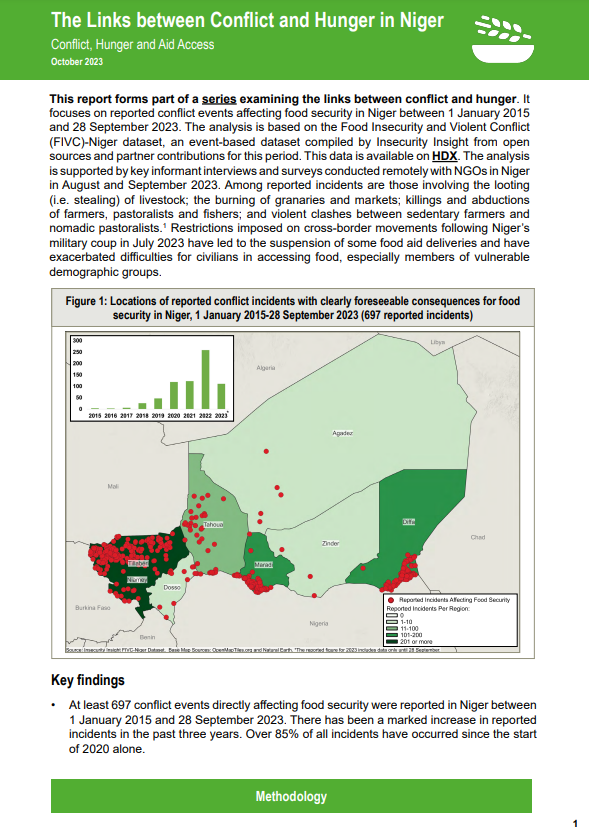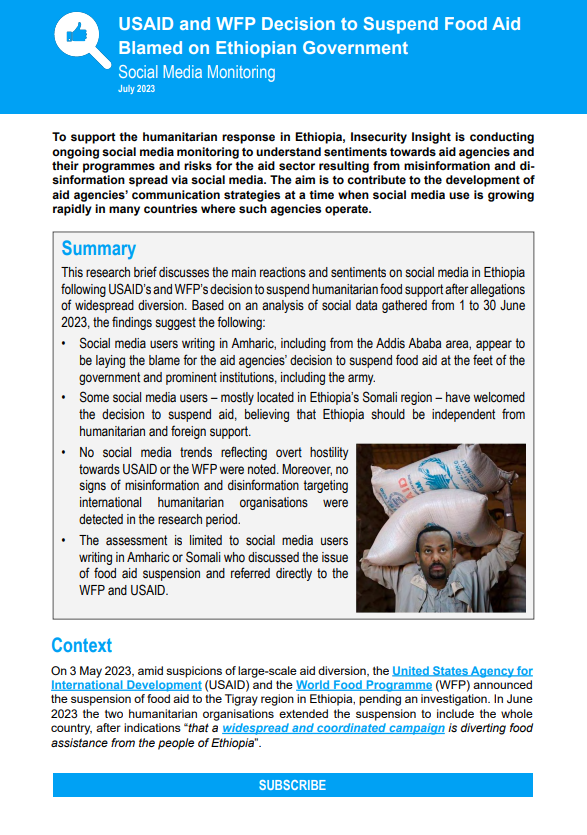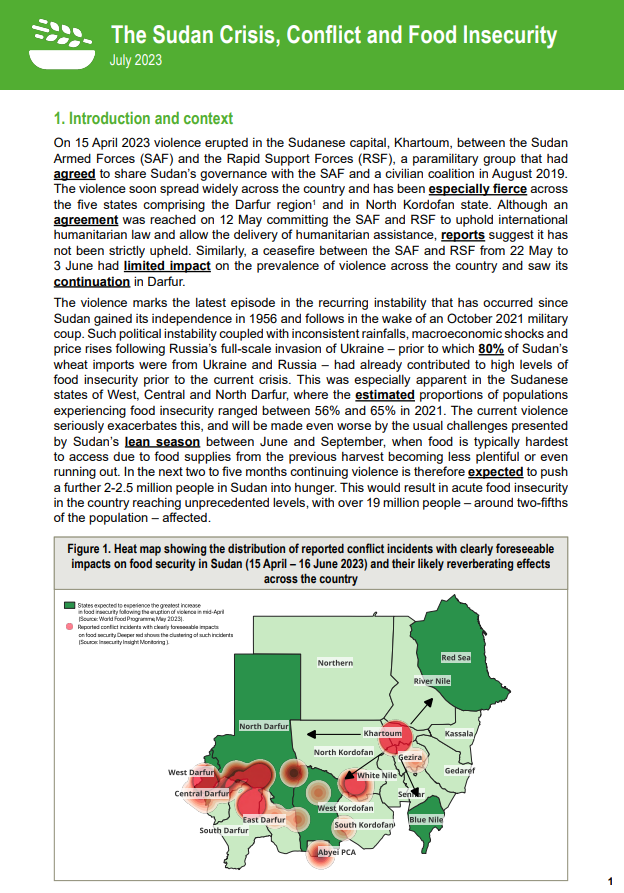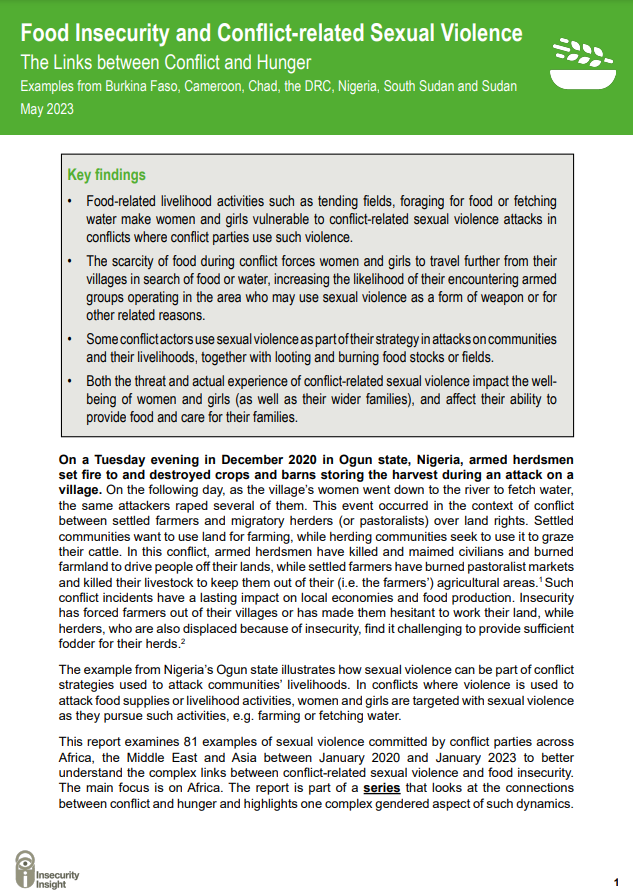The Food Insecurity and Violent Conflict (FIVC) Dataset
To help address the knowledge deficit concerning how specific conflict incidents contribute to food insecurity, Insecurity Insight documents and analyses these using open source intelligence (OSINT) methods. This information is compiled (and available for download) in the Food Insecurity and Violent Conflict (FIVC) dataset. We are also working with Dataminr, one of the world’s leading artificial intelligence corporations, as one of their AI for Good Partners to help automate the identification and classification of incidents.
The categorisation of incidents in the FIVC dataset is based on the Monitoring and Evaluation of Food Insecurity in Conflicts (MEFIC) framework, an analytical approach for understanding how armed conflict affects food insecurity.
The aim of the FIVC dataset is to support the humanitarian community with programming which helps prevent hunger and to contribute to better understandings of the connections between conflict and food insecurity.
Currently, the FIVC dataset focuses on the Gaza Strip since 7 October 2023, Niger between January 2015 and September 2023, Syria and Somalia between 2017 and 2022 as well as Sudan following the severe escalation of violence in mid-April 2023. Corresponding analytical reports based on the data for these three countries are available at the bottom of this page. The FIVC data is also in the process of being expanded to cover further countries which will allow for greater cross-country analysis.
